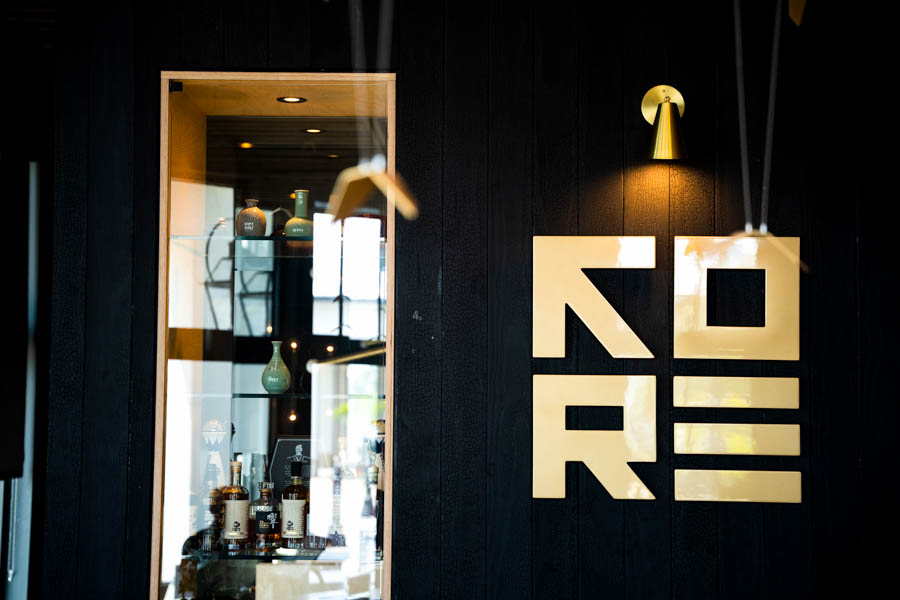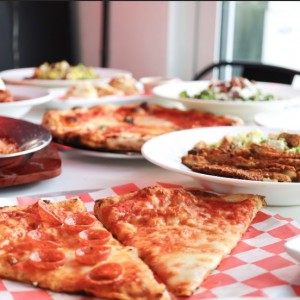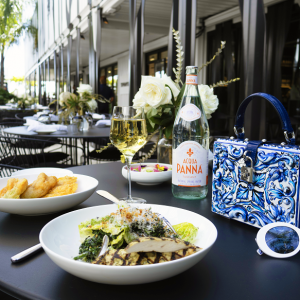One of the great joys of standing in front of an open flame to manage a grill full of cooked meat is sneaking a sample of the goods right off the grate. Something in the still-sizzling juices retains an elemental component of the fire that dissipates once it’s been off the grill even 30 seconds. In the States, that joy is most often reserved for the solitary grillmaster as a small but glorious tax collected for their service to the hungry mouths waiting at a table nearby. At Korê Steakhouse, however, a new tipless Korean BBQ restaurant in Waterside Place, every diner shares in that small but glorious tax as grilling and eating are transformed into something communal.
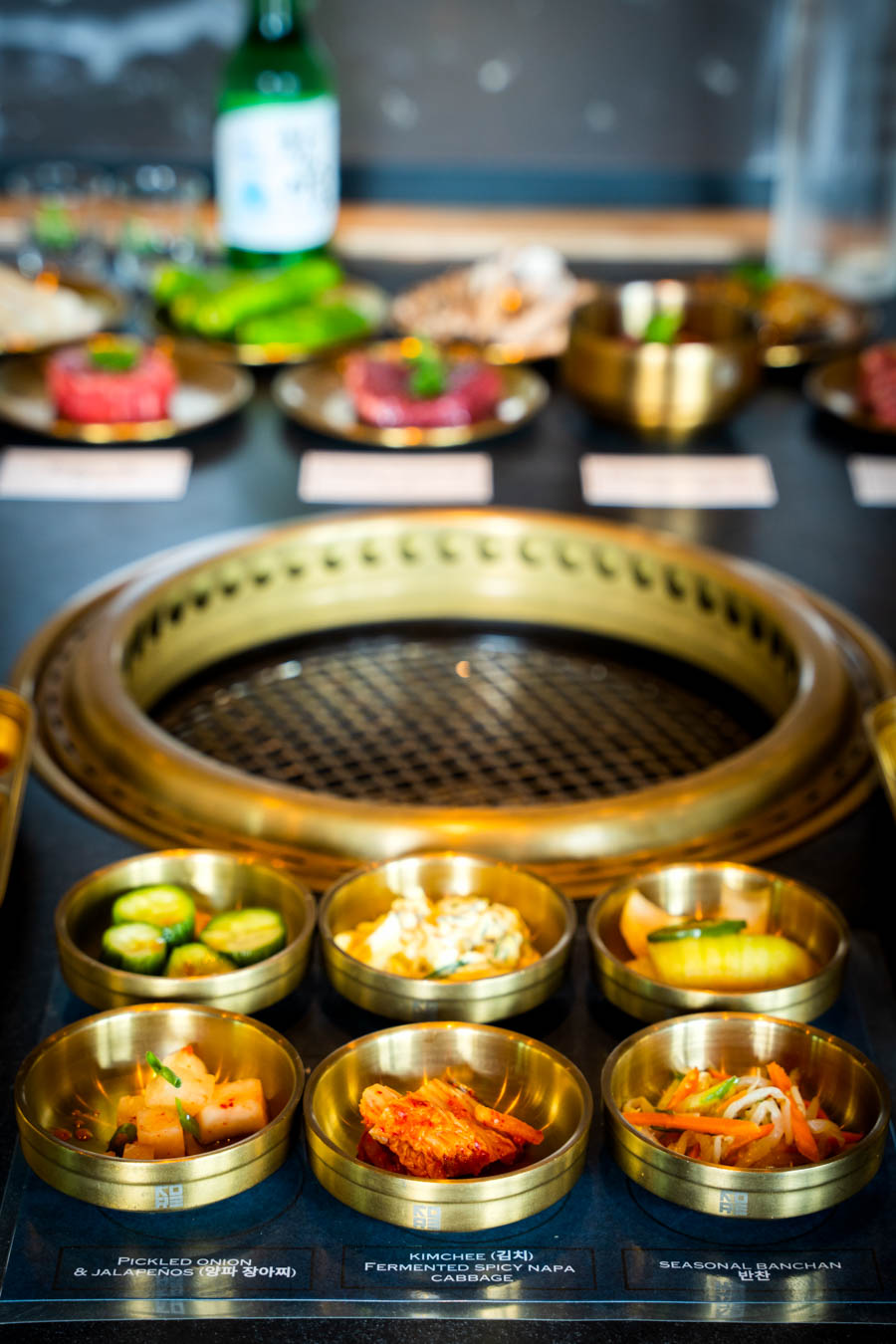
WHILE THE COMBINATION OF MEATS AND BANCHAN HEIGHTENS THE COMMUNAL MOTIF, A LARGE MENU OF MORE TRADITIONAL, SIZABLE CUTS OF MEAT ARE AVAILABLE TO GRILL AT THE TABLE TOO.
The concept comes from Korea, where owner Daniel Dokko—who also owns the popular JPAN—traces his cultural heritage. More accurately, his parents were born in Korea, immigrated to Brazil where they had Daniel and sent him to school there alongside a sizable population of Japanese immigrants. By the time Dokko was 15, he knew he wanted to open up a restaurant. So, when he moved to the U.S. in 2002, he worked his way through countless kitchens and mastered the art of sushi, then made the savvy business decision to open a Japanese restaurant to capitalize on its broader popularity compared to Korean cuisine (at the time, anyway). This was in 2008 when he opened JPAN. After over a decade and a half of his flagship restaurant’s success, Dokko felt it was finally time to get back to his Korean roots.
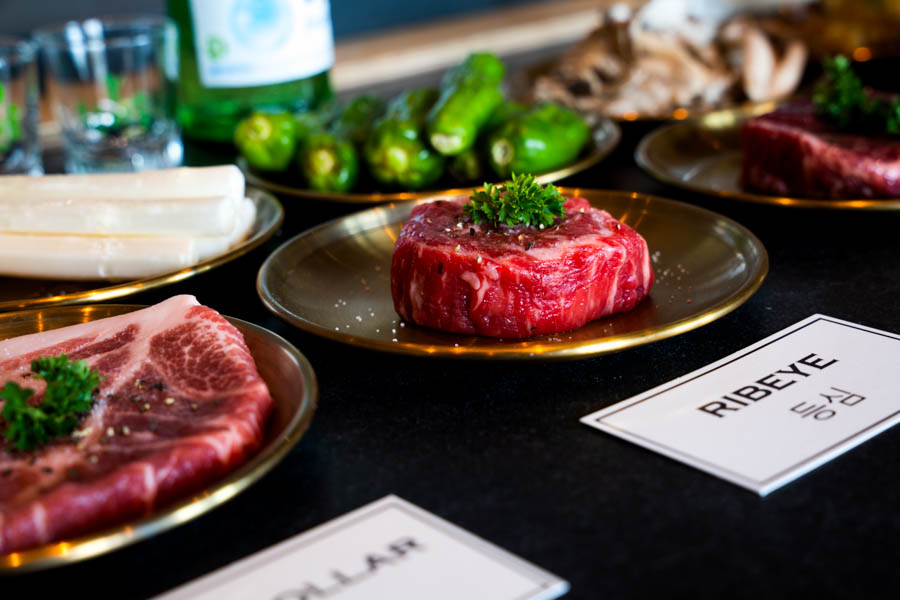
But rather than duplicate the same successful formula that worked with JPAN—inspired food and cocktails that elevate the casual dining model—Dokko opted to introduce the region to gogi-gui. The Korean style of BBQ calls for a grill that’s inlaid into the dining table itself, with meat, vegetables and assorted side dishes spread around the table, all of it meant to be shared along with the cooking duty itself. And it’s the communal act of cooking that transforms the dining experience into a heightened social activity.
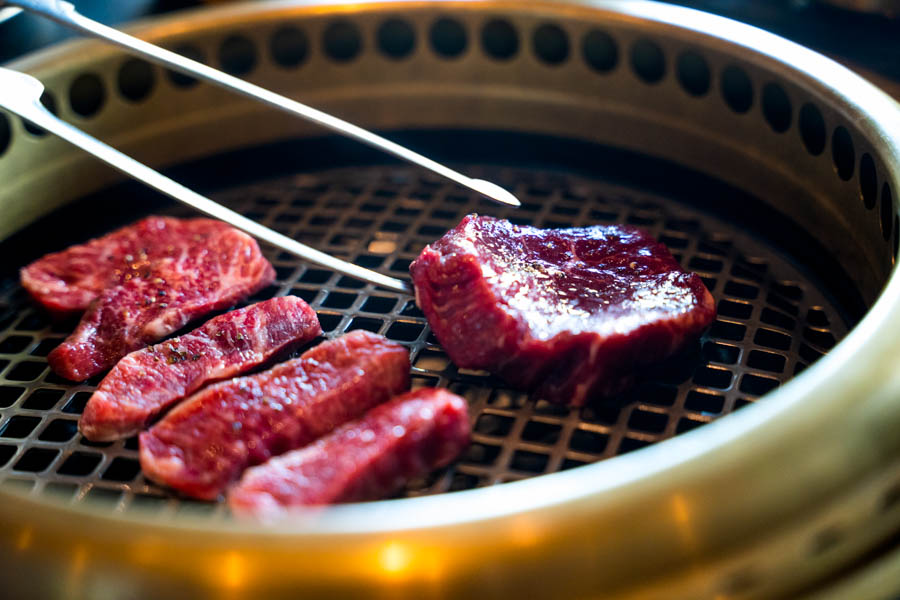
A sensible introduction to the concept is the Butcher’s Pride combination of grillables that arrive at the table on a cart. In addition to the banchan (assorted side dishes like kimchi and spicy pickled cabbage), this combination comes with appetizers of green onion salad and cheese corn, the latter an invention of Korê’s head chef and a former sushi chef of JPAN, Clark Park. During and following the Korean War, American GIs introduced the nation to corn, which now consumes it in soups and, notably, on pizza. The cheese corn appetizer pays homage to that history and features corn baked in a small cast iron dish with mozzarella cheese. It serves as a nice complement to the simple green onion salad, which lets the sesame oil and oniony greens speak for themselves. As for the tempura shrimp, the fried morsels come with a kimchi aioli, a sauce that ought to be kept around to dip other items in.
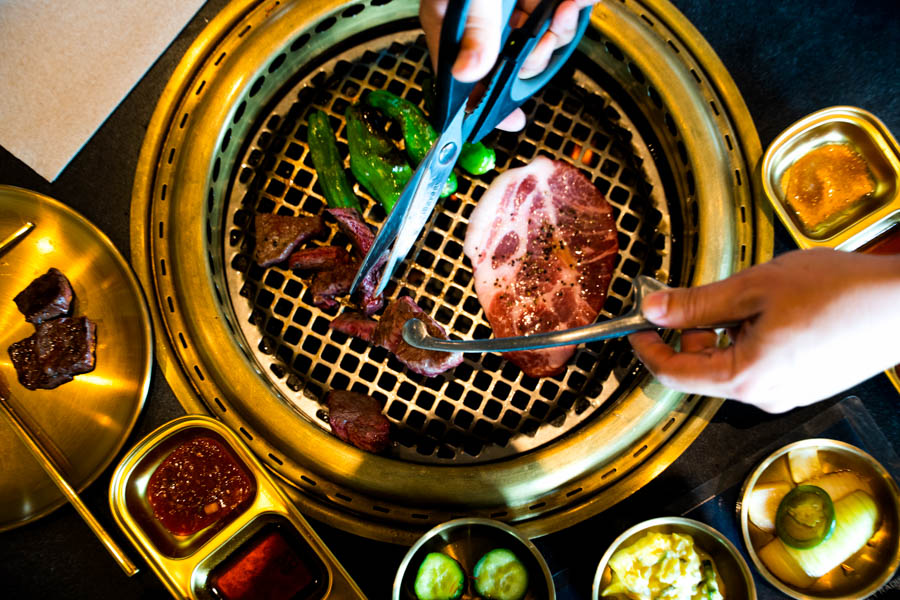
VARIOUS BEEF CUTS, INCLUDING A FILET MIGNON, SIZZLE ON THE TABLETOP GRILL.
In terms of appropriate beverage, a bottle or two of soju would serve a pair or trio of diners well. The clear distilled beverage is the most consumed drink in Korea and reinforces the sharing style of the dining experience when consumed in its most traditional way. That traditional way sees drinkers pour small glasses for each other, with a small toast before shooting the glass of liquor that tastes similar to gin but without its floral tones or excessively dry bite.
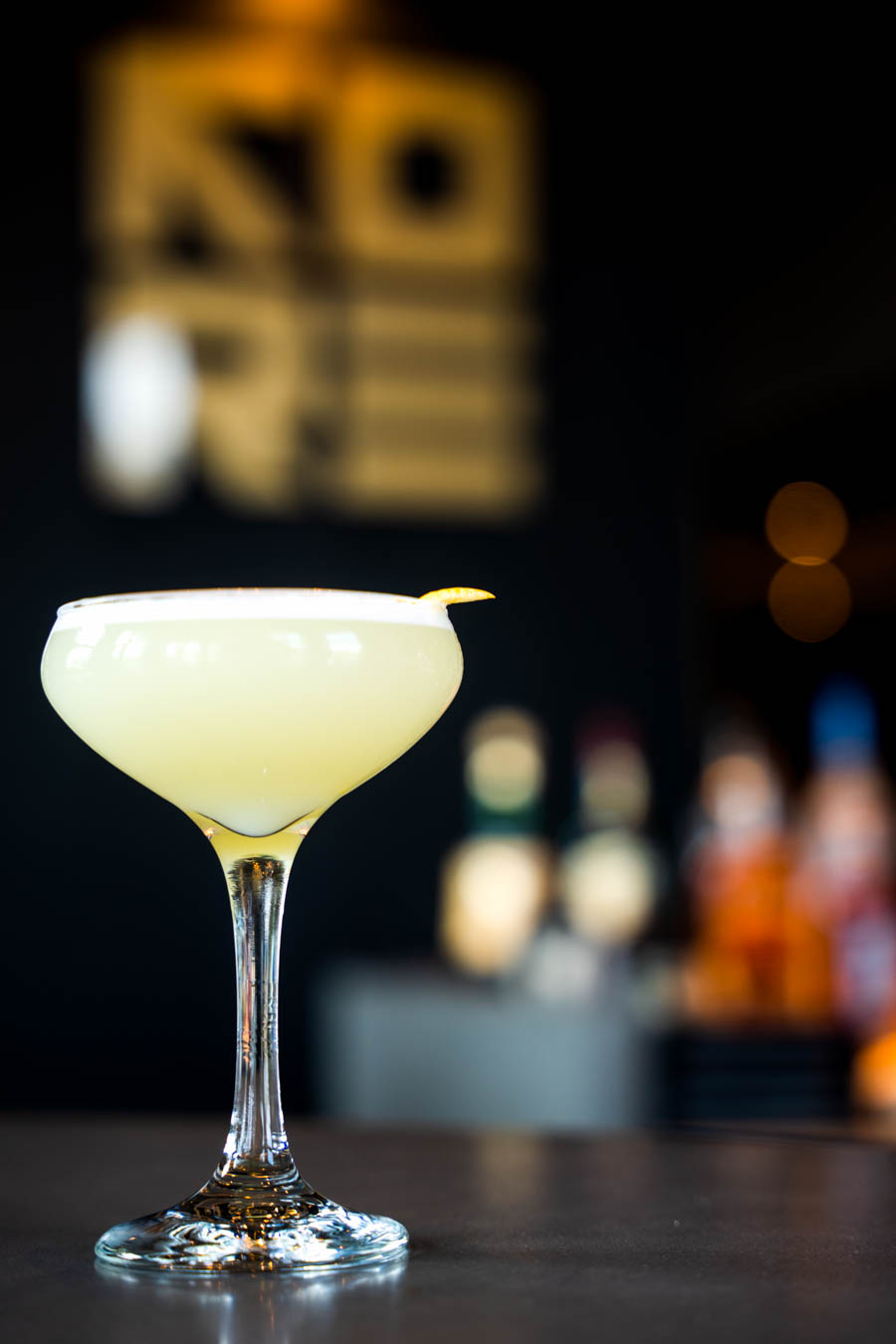
1561 LAKEFRONT DR #111, SARASOTA, 941-928-5673, KORESTEAKHOUSE.COM, @KORE_STEAKHOUSE.
The appetizers and soju offer diners a great opportunity to familiarize themselves with what will become the modus operandi for the evening, namely the passing and sharing of food. When the time for grilling meat arrives, any techniques learned sharing the appetizers come in handy. Korê provides their diner-chefs with nothing more than a pair of tongs and a pair of scissors, and these two implements are all that is needed. With the tongs, a diner grabs one of the raw meat selections and places it on the hot grill in the table’s center. A quick sear of 90 seconds to 2 minutes on either side is enough for most of the meats. Once the morsels are cooked through to the desired temperature, they can be cut into bite sized pieces with the scissors and served. “It’s even better to just take your chopsticks or fork and eat the meat directly off the grill,” says Dokko.
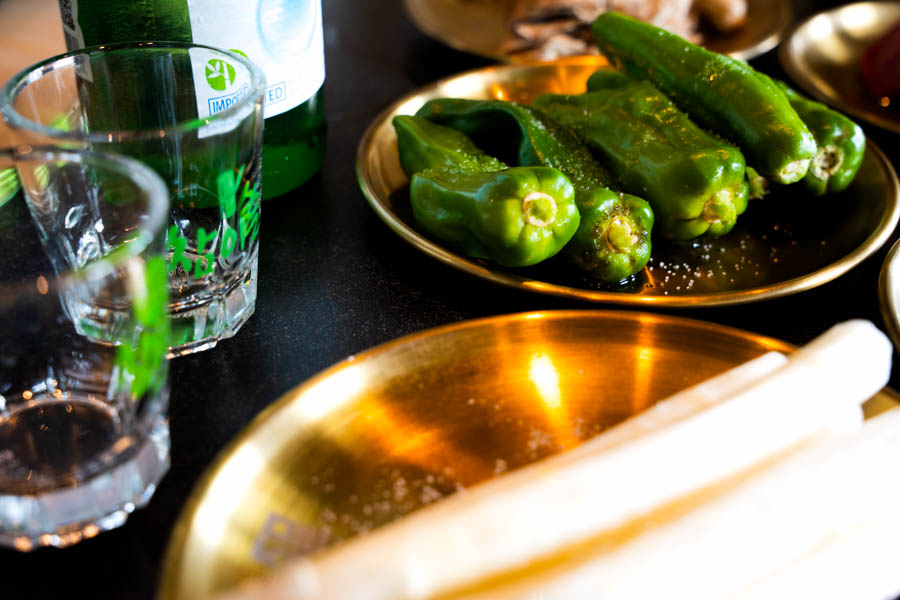
SAKE AND SHISHITOS ARE A MAINSTAY AT THIS SWANKY KOREAN HOTSPOT.
It’s worth noting that Dokko sources premium cuts of meat from highly regarded suppliers. Most of the beef comes from Snake River Farms out of Idaho, one of the first American producers of Wagyu beef. Cheshire Pork out of North Carolina supplies Dokko with their exquisitely marbled pork that gives even a quick sear of the pork collar, for example, a silky, mouthwatering bite. In all, the Butcher’s Pride combination comes with pork belly, filet mignon, NY strip, ribeye, pork collar and marinated galbi (short rib). Most of the cuts come thinly sliced and lightly seasoned with just salt and pepper, offering an opportunity to let the meat flavor speak for itself. This broad survey of the meat offerings adds to the communal approach of Korean BBQ, since new cuts constantly cycle on and off the grill over the course of the meal.
Perhaps unsurprisingly, the marinated galbi packs the most flavor on account of its ample seasoning, but each of the meats are also great candidates for the three dipping sauces Korê provides each table, including ssamjan (fermented soy bean sauce with a touch of kick), Korê sauce (light soy sauce) and premium sesame oil with salt. Again, remember to try the kimchi aioli with everything. Nowhere on the menu will a diner find a 40-ounce porterhouse, the same cuts in the combination can be had in 3-4 ounce portions, which reduces the quantity of cuts and, thus, the amount of time spent tending to the grill. But, frankly, what’s the point of an evening at Korê if not to spend more time tending to the grill, sharing in the communal joy of eating as a team sport?





